If you have ever stood on Crewe station, you may have noticed that hardly any freight trains pass through it. This is because they are diverted via a separate four-track railway in a deep cutting to the west. Known as the Crewe Independent Lines, it is tunnelled beneath the North Junction layout to join the main lines going to Manchester and Liverpool/Warrington.
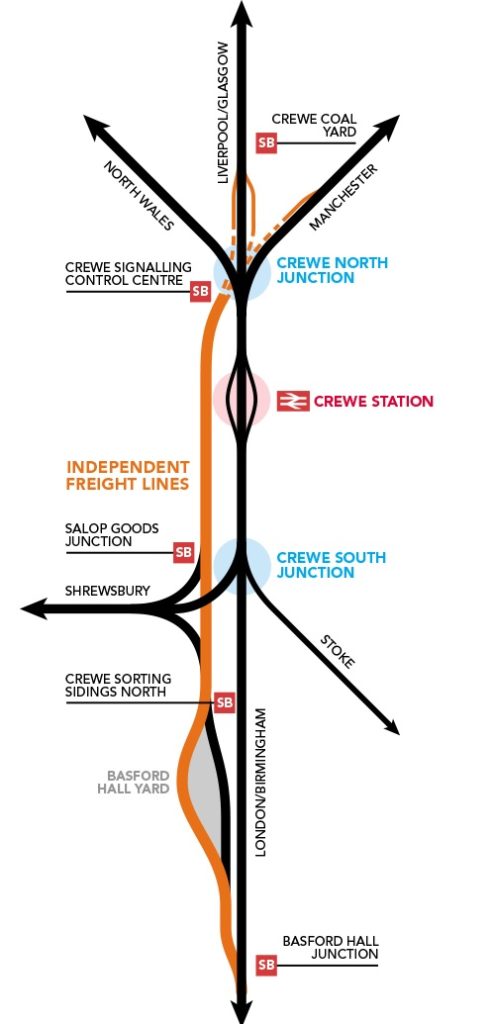
The signalling is old and in need of renewal, which is currently underway and called Crewe Basford Hall and Independent Lines resignalling. The line is only a few miles long, but has in the order of 161 signalled routes and 70 signals, and the scheme has a number of challenges to overcome.
Crewe has always been an important major junction on the West Coast Main Line; therefore, its signalling infrastructure is extensive and complicated. The station opened in July 1837 and was built where the line crossed the turnpike road linking the Trent & Mersey and Shropshire Union Canals. Crewe became the junction where the lines to Manchester Piccadilly and North Wales diverged, and it is the last major station before the branch to Liverpool Lime Street, with the main line going on to Scotland. South of the station there are lines to Stoke-on-Trent/Derby and Shrewsbury/South Wales, along with the main line to London and Birmingham. Looking to the future, HS2 services are also planned to call at Crewe, with Basford Hall controlling HS2 trains into the station.
Crewe Works was built in 1840 and one of the reasons Crewe was chosen by the Grand Junction Railway for train building was its clay, providing a solid base for the heavy machinery. This has implications for the new signalling of the Independent Lines, which we will come back to later.
By the 1890s, 1,000 trains passed through Crewe every 24 hours, with many being freight trains which did not need to call at the station. So, the Independent Lines were approved in 1895 and constructed between 1896 and 1901, with over 1,000 labourers digging the four-track cutting with tunnels under North Junction. The work also included the construction of a large marshalling yard to the south of the station at Basford Hall.
Preparing for HS2

Crewe’s last major resignalling took place in 1985 with the creation of the Crewe Signalling Control Centre (SCC) located close to North Junction and the Independent Lines. While this was an extensive resignalling, it did not include the Independent Lines or Crewe’s other fringes, covering only the station area and junctions. The Independent Lines were considered for closure in the late 1980s, but fortunately this did not happen and there has been increased demand for freight flows through the Covid-19 pandemic; Network Rail is looking to grow future freight flows.
More recently, the signal box at Crewe Gresty – controlling the line to Shrewsbury/South Wales – was resignalled in 2015 (see Issue 136, February 2016) and currently there are several schemes within the overall ‘Crewe Hub’ programme.
Network Rail is working with Cheshire East Council, the Department for Transport and HS2 Ltd to develop plans to provide more capacity, better connectivity, greater resilience, and improved access and facilities at the station, as well as accommodating the HS2 trains that are proposed to call at Crewe.
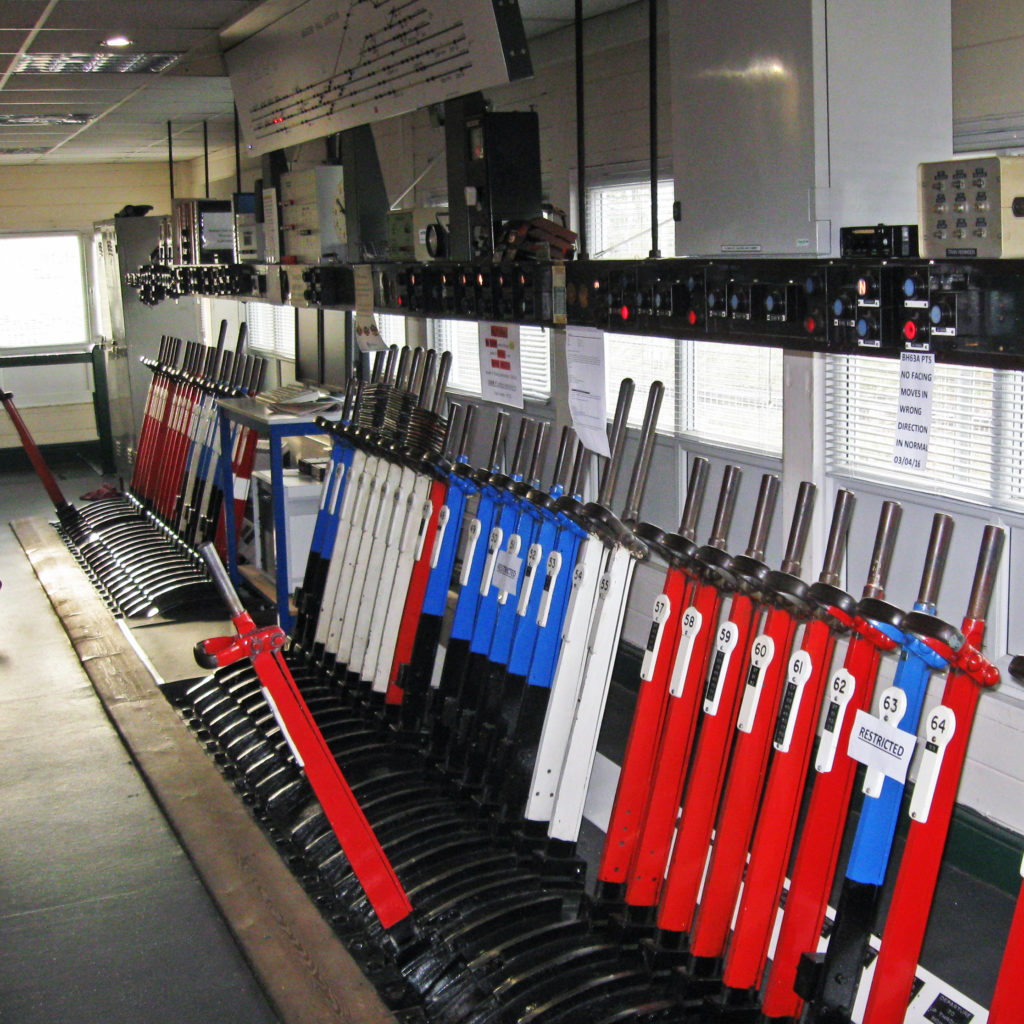
The Crewe Basford Hall and Independent Lines (BHIL) resignalling is an early part of the Hub programme; one of the main reasons the Independent Lines are being progressed first – aside from asset condition – is to provide a reliable diversionary route for future Crewe station blockades. BHIL will also make provision for the HS2 Phase 2a southern connection at Basford Hall. The Hub programme also includes the station enhancement, station area resignalling and remodelling, HS2 Phase 2b northern connection, and Alsager line resignalling which includes 16 level crossings.
Three boxes
BHIL is currently controlled by three signal boxes. Entering the Crewe area from the south, the first signal box is a lever frame interlocking at Basford Hall, dating from 1897. This controls the route into the main Crewe station and the Independent Lines. Without BHIL resignalling, Basford Hall Junction signal box would have to interface to HS2 which would be a challenge given that it’s 125 years old!
Moving north along the Independent Lines, the next signal box is Crewe Sorting Sidings North. This is a BR LMR type 15 design that opened on 4 June 1962 – around the time of electrification – and was fitted with a locally-made BR Gresty Road S&T individual function switch signalling panel. It was refurbished with uPVC cladding and windows in 2013, prior to the commissioning of a replacement Tew Engineering Limited individual function switch signalling panel. This is also known as a One Control Switch (OCS) panel, as a separate switch is provided for every signalled route.
Salop Goods Junction signal box is located close to the football ground and originally dates from 1901 when it was provided with a Webb & Thompson power frame. Its current lever frame is from 1936 and the box still uses London & North Western Railway (LNWR) permissive block signalling which, under special conditions, allows a train to proceed at caution into block sections already occupied by other trains. This apparent contradiction is normally only used on lines with freight trains approaching large freight marshalling yards. This is so successive trains waiting to enter the yard can bunch up behind one another, rather than being spaced out behind in successive absolute block sections.
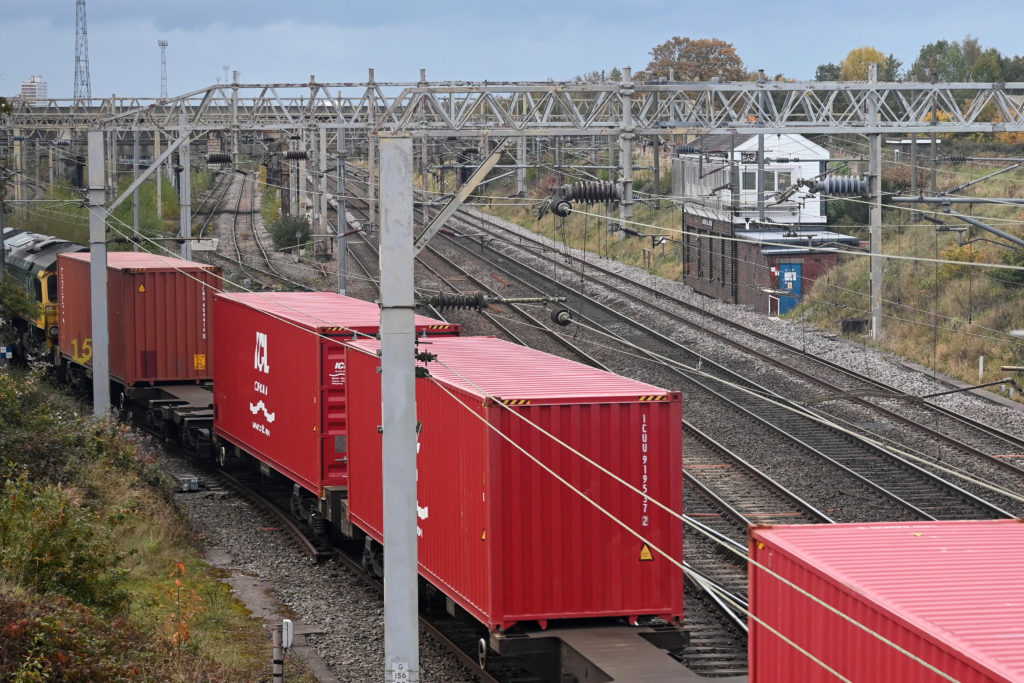
The Independent Lines are used very occasionally for passenger trains, but permissive freight movements are not permitted when passenger train movements take place. LNWR existed between 1846 and 1922, so that gives an idea of the need to renew the signalling on the route. Salop Goods Junction signal box also received significant alterations/upgrade as part of electrification in the 1960s.
All three signal boxes have been subject to various life-extension works over the years, but the route now needs extensive resignalling.
Sense of scale
The objectives of the BHIL resignalling project are to improve system safety with compliance to modern standards, be ‘digital ready’ and create a railway fit for the 21st Century. The signalling must be capable of being modified and expanded to meet the requirements of Alsager resignalling within the Crewe Hub programme, and to provide reliable and resilient signalling infrastructure, to passenger train standards, with a 30-year-plus life span. Bi-directional signalling on the Up Independent Line – allowing direct access to South Yard and Coal Sidings – and the Up Chester Independent will be provided. This will create a route towards Chester avoiding Crewe station.
The scheme has a number of planning and delivery challenges, with a dense signalling footprint, a large number of operational sidings and multiple businesses impacted by stage works. The stage works will be significant, due to the large volume of works to be delivered. For example, there are 70 point machines of different designs and the majority will be replaced with clamp locks. The station must be kept open as much as possible and the final commissioning in 2023 – which will need the main station to close – must be kept as short as possible.
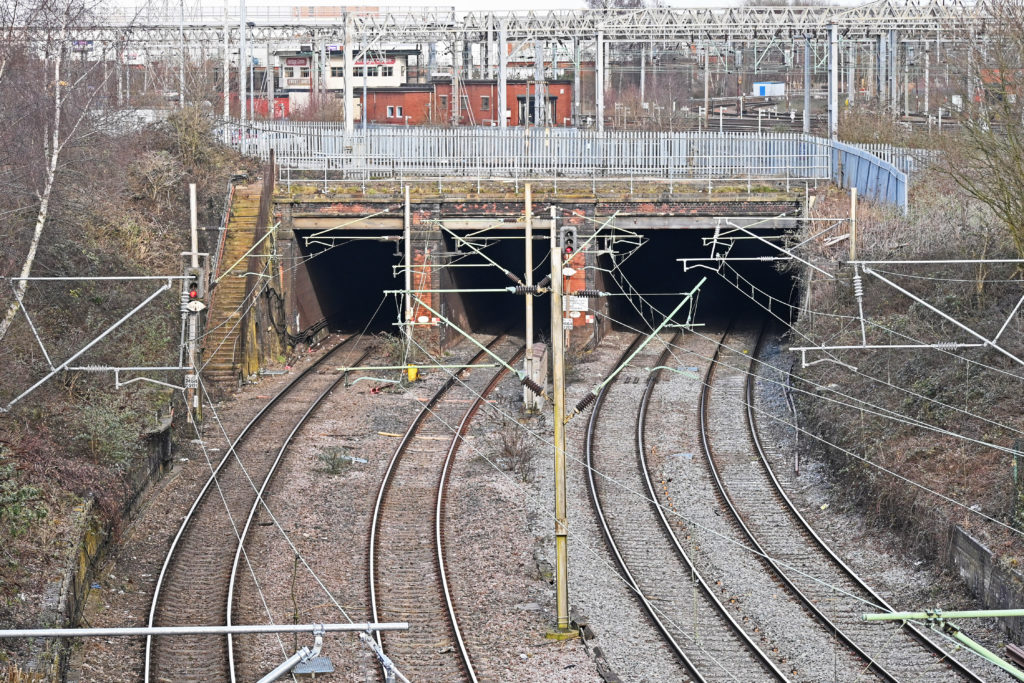
Like many other projects, in order to mitigate Covid-19 infection risk there has been more reliance on visual tools, and remote interdisciplinary checks and engineering reviews. Methods of working on site have been modified, with site welfare and logistical planning closely reviewed to protect the welfare and safety of staff carrying out site works. More flexible ways of working have been established to create and maintain a team spirit with an environment of trust and collaboration. The objective is to ensure team members look after each other even more than they would when together in the office, and to achieve the project milestones.
Contracting strategy
Network Rail Design Development (NRDD) undertook the initial outline design, signalling scheme plan design and signal sighting, with Mott MacDonald providing the initial design for track, signalling power and points heating. Siemens Mobility is now the main contractor, covering signalling, civils, operational telecoms and power. Central Rail System Alliance (CRSA) – consisting of Balfour Beatty, TSO and Atkins – is covering track, switches and crossings, and overhead line works, with Network Rail Telecoms providing the telecoms network requirements via the IP fixed telecom network.
An overall system architecture is now in place. With the large number of point machine conversions to clamp lock and new track circuits, and with some bespoke track on the Independent Lines, Siemens and CRSA have worked closely to ensure a robust understanding of the existing infrastructure. Signal sighting has identified overhead line modifications will be required to achieve compliant sighting and CRSA will deliver the required steelwork changes. Some sections of overhead line equipment above the out-of-use Down Chester and Coal Sidings 9 will be recovered, and CRSA will also deliver some ‘height and stagger’ alterations for areas of minor track realignment. They will also provide a feed to a new signalling Power Supply Point (PSP) at Crewe North Junction.
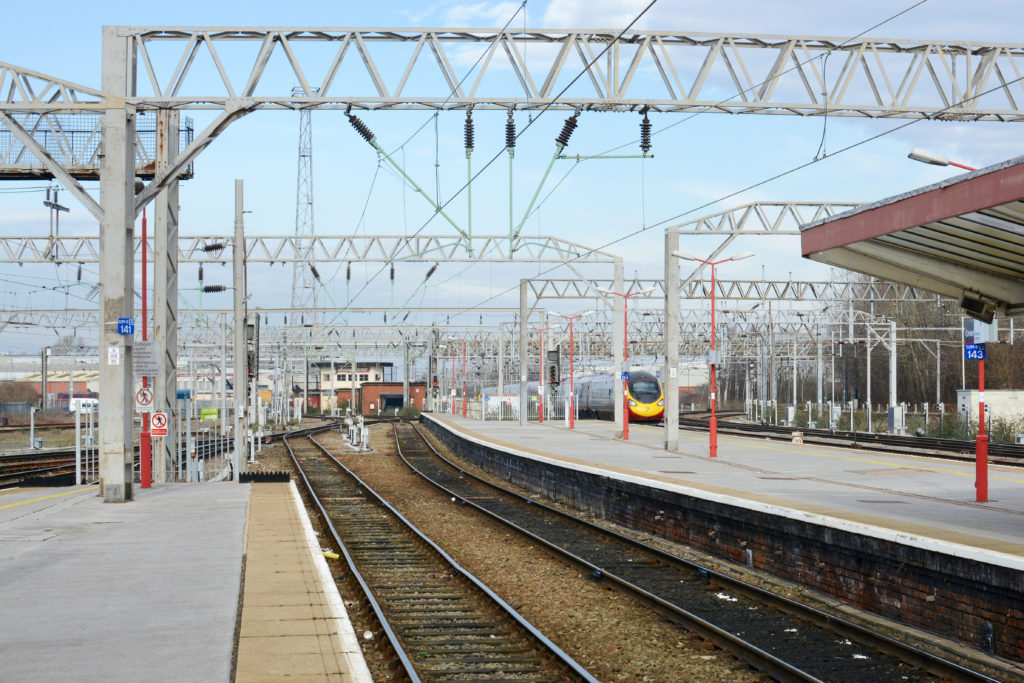
Basford Hall will be the interface to the HS2 Phase 2a southern connection into Crewe station and the BHIL project will need to locate a number of assets at Basford Hall including a PSP, SP Energy Networks (SPEN) transformer, a new Distribution Network Operators (DNO) cabinet, telecoms transmission node and a signalling equipment building. These will all need cable routes, so clear engineering interfaces with HS2 are essential. The design for HS2 and the connection into Crewe South are at an early stage, but BHIL must anticipate the likely requirements to avoid obstructing HS2 with equipment locations. The HS2 proposed alignment is in the BHIL federated BIM model so they can clearly see where assets can/cannot be placed.
The project will also need to interface with other projects at the Manchester Rail Operating Centre (ROC). When Crewe Gresty was resignalled in 2015, the ROC was not available, so a workstation was established in the Crewe SCC near North Junction for the Gresty area. However, the ROC is now available and so is the FTNX IP transmission network; therefore two workstations will be provided at the Manchester ROC, one for the Independent Lines and the other for Crewe South. While initially the latter will only control the Basford Hall area, it will eventually control Crewe South Junction and the Alsager line. The BHIL project therefore needs to establish all of the Crewe Hub requirements within the ROC.
Signalling technology
The main signals on the scheme will be Dorman LED heads using lightweight structures, with route indicators supplied by VMS. Siemens Westlock interlocking and Westrace Trackside System (WTS) lineside infrastructure will be used. It is five years since Thameslink received the first application of the WTS IP network-based technology and it has also been proven in the north-west and used on the Weaver Wavertree scheme. So, while WTS is still innovative ‘state of the art’ signalling, it is not a risk to the BHIL project. The workstations will be Siemens Westcad, which will also include a Westcad Mimic display in the shunter team manager’s office at Crewe.
Both the LED signals and the Siemens Westlock, Westrace and Westcad systems are designed and built in Britain, and, in the case of the main signals, not too far away from Crewe by Dorman in Southport.
Train detection will be provided by Frauscher axle counters in the Basford Hall area, with track circuits used on the Independent Lines through to the Crewe Coal Yard signal box. Track circuits were chosen over axle counters due to number of propelling moves and vehicles of different length that constantly shunt and move across the area. There are historic drainage issues here, as Crewe is built on clay. This would affect track circuit operation and reliability, so there is a programme of works to address drainage and provide acceptable reliability. This will involve a completely new drainage system.
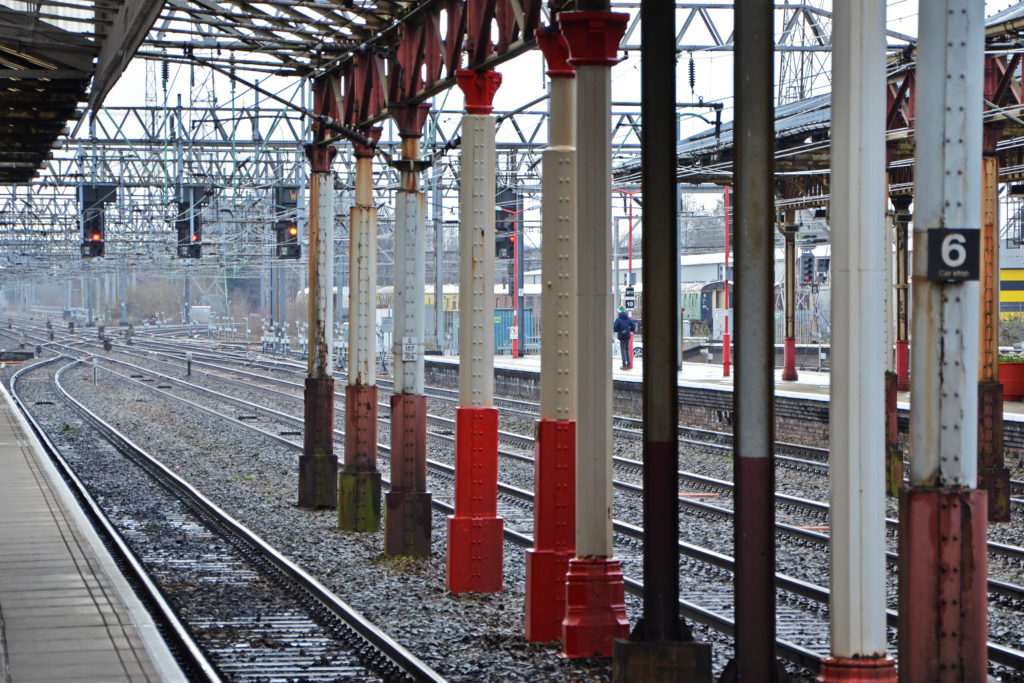
Currently there are lines in the Basford Hall area with no track circuits; instead a ‘shunter release’ system has been adopted and the mimic display provides the shunters with the same information as the signaller and will reduce the number of communications required with the ROC. This will offer operational flexibility for freight moves, but in a safe structured form. Banks of ‘off indicators’ will also be provided at Crewe to allow shunters to safely carry out their duties while located in a position of safety.
A comprehensive staff protection system is being installed involving lockouts for the tunnel sections under North Junction and work is ongoing to identify if an improved white period arrangement can be implemented for the Independent Lines, supported with a semi-automatic train warning system in the Basford Hall area.
A linespeed increase assessment is ongoing to determine if the speed can be increased from its current restrictive 10mph. This will require a cross functional approach, including track and overhead line improvements, as the new signalling will not be the constraint. Making the Independent Lines suitable for passenger services will also enable trains to operate around Crewe during the disruptive closure of the main Crewe station for its resignalling. Providing platforms on the Independent Lines for Manchester to South Wales passenger trains may be a possible future enhancement, although this is not in any current plans. This has been suggested a number of times over the years to avoid such trains crossing the North Junction, but the Possessive Block signalling was always the problem.
If there are any heritage railways out there in need of a signal box, there will be three available here once the project is completed.
Thanks to Claire Hulstone, Ian Fury and Steve O’Hare of Network Rail for their assistance with this article.

